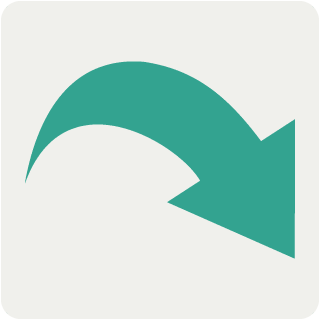Understanding Geometric Figures In The Plane & In Space
The goal of this Mind-Map is to summarize and outline the primary concepts surrounding geometric figures as they exist on the plane and in space for students grades K-5. The audience is student-teachers, to help with outlining and planning for integrating these concepts into their classrooms.

Curves & Polygons In The Plane
Curves In The Plane
A curve can be described as a set of points on a plane, that can be linked with one another without interrupting the link until all points are linked.
Simple Curve
A curve that does not intersect with itself at any point.It can be said to be not simple if it does intersect with itself.
Closed Curve
A closed curve has the same beginning point and end point.A curve is not closed if the beginning and end points are not similar.
Jordan Curve Theorem
A simple closed curve has three separate regions:1. The curve itself2. It's interior region3. It's exterior region
Convex Curves
A curve is convex if all possible line segments are contained within the interior of the curve.
Concave Curves
A curve is concave if any line segments that begin and end in the interior of the curve, pass through the exterior of the curve.
Polygonal Curve
A curve that has a finite number of sides and vertices.A polygonal curve can be simple, not simple, closed, not closed, convex, concave, or a combination of these.
Total Turn Theorem
The total turn theorem states that every complete rotation that a curve makes around a central point constitutes one turn. The total turn of a curve is the multiple of 360 degrees that shows how many turns around that central point the curve makes.
Polygons In The Plane
A polygon is a simple closed polygonal curvePolygons are given their names by the number of sides that they have
Classifying Triangles
There are six different classifications of triangles
Acute
An acute triangle is any triangle with three acute interior angles.
Right
A right triangle is any triangle with one 90 degree angle.
Obtuse
An obtuse triangle is any triangle with exactly one obtuse angle.
Scalene
A scalene triangle is any triangle with three sides of different length.
Isosceles
An isosceles triangle is any triangle that has two sides of the same length.
Equilateral
An equilateral is a triangle with three sides of exactly the same length.
Classifying Quadrilaterals
There are seven different classifications of quadrilaterals.
Kite
A kite has two distinct pairs of congruent adjacent sides.
Trapezoid
A trapezoid has exactly one pair of parallel sides.
Isosceles Trapezoid
An isosceles trapezoid has two pairs of congruent angles along both parallels.
Parallelogram
A parallelogram has two pairs of opposite sides that are parallel.
Rhombus
A parallelogram with four sides of the exact same length.
Rectangle
A parallelogram with four right angles.
Square
A rectangle with four sides of equal length.
Regular Polygons
Regular Polygons are both equilateral and equiangular.
Angle Measures In Regular Polygons
The interior angles of all regular polygons can be found with the following formula:(n-2) * 180 / nThe exterior angles of regular polygons can be found with the following formula:360 / n

Figures In The Plane
The plane is a two dimensional flat surface that extends indefinitely in all directions. Think of the plane as an infinitely large, perfectly thin, sheet of paper.
Points In The Plane
A point is a single location in the plane that is defined by an exact set of coordinates.
Collinear Points
Any three points or more that fall on the same line are said to be collinear
Lines In The Plane
A line passes through any two points on the plane in a perfectly straight fashion in exactly opposite directions for an infinite distance.
Parallel Lines
Two lines are said to be parallel if they share no common points between one another
NonParallel Lines
Non parallel lines share a common point which is referred to as the point of intersection
Perpendicular Lines
Two lines that intersect at a 90 degree angle are said to be perpendicular
Line Segments
A line segment is the section of a given line between two designated points A and B. A and B are considered the end points of the line segment. The point located exactly in the middle of the line segment is called the midpoint. The absolute value (the length) of the line segment can be found by subtracting B from A.
Rays
A ray is a line that extends from endpoint A through point B and indefinitely onward.
Angles In The Plane
Where two rays share the same endpoint (the angle's vertex) and extend outwardly from each other, an angle is formed.
Angle Designations
There are six primary types of angles. Angles can be formed from zero to 360 degrees forming a complete circle around a point.
Zero Angle
Two rays extending from a vertex outwardly through a similar point form a zero degree angle
Acute Angle
An acute angle is greater than zero but less than 90 degrees
Right Angle
A right angle is exactly 90 degrees
Obtuse Angle
An obtuse angle is greater than 90 degrees but less than 180 degrees
Straight Angle
A straight angle is formed when two rays extend outwardly in exactly opposite directions from their vertex, it is always exactly 180 degrees
Reflex Angle
A reflex angle is greater than 180 degrees but less than 360 degrees. A reflex angle depends on the direction from which you measure the angle.
Vertical Angles
Where two straight lines cross, an intersection is created, leaving four angles. The angles that are opposite of each other are congruent angles (equal in measure). This is true by the vertical angles theory.
Alternate Interior Angles
When two parallel lines are intersected by a transversal, a series of angles is created. The angles that are the interior angles of the transversal line are equal by the alternate interior angles theory.
Triangles
Triangles are composed of three interior angles that sum to 180 degrees

Figures In Space
Planes & Lines In Space
Space is a three dimensional area where there are an infinite amount of planes and lines. Each plane creates three disjoint sets:1. The plane itself2. One side of the plane (a half space)3. The other half spaceTwo planes can only be either parallel or intersecting.
Skew Lines
Skew lines are non intersecting lines that are on different planes. They are not parallel to other lines.
Three Dimensional Figures In Space
Three dimensional figures in space consist of surfaces on the exterior that enclose either a hollow or solid interior.A simple closed surface is any surface without holes that contains a hollow interior.A solid is a connection of all of the points on a figures surface and interior.
aCurves In Space
A curve that extends off of the planar surface and into the space of a third dimension.
Spheres
A sphere is a set of points in space at a constant distance from the center point of the figure.
Polyhedra
A polyhedron (singular figure) is a simple closed surface formed from planar polygonal regions. Each distinct region is called a face.Polyhedra (plural) are named according to their number of faces.
Regular Polyhedra
Three distinct features comprise a regular polyhedron:1. It's surface is convex2. It's faces are congruent regular polygons3. The same number of faces meet at each vertex
Cube
Comprised of six square faces.
Tetrahedron
Comprised of four equilateral triangular faces.
Octahedron
Comprised of eight equilateral triangular faces.
Icosahedron
Comprised of 20 equilateral triangular faces.
Dodecahedron
Comprised of 12 regular pentagonal faces.
Euler's Formula
In Euler's Formula there are three important denotations:F - Number of faces on a polyhedronV - Number of verticesE - Number of edgesEuler's Formula shows that there are similarities between all regular polyhedra:V + F = E + 2
Pyramids
A simple closed surface joining the vertices of a polygonal base with a single point in space.
Prisms
A simple closed surface that joins the vertices of two parallel congruent polygons from different planes.
Cones
A cone has a simple closed curve for a base and an apex in space not on the plane of the curve. The cone is formed by connecting all points on the curve to the apex.
Cylinders
A cylinder joins two congruent simple closed curves that are parallel from different planes by connecting all points on each curve.
